Rosewill Tokamak 1500 PSU Review
Rosewill enters the 80 PLUS Titanium efficiency club with two Tokamak models boasting 1.2kW and 1.5kW of capacity. The highest-end version is on our bench today, and we're eager to check out its Enhance-based platform.
Why you can trust Tom's Hardware
A Look Inside And Component Analysis
Parts Description
Before proceeding with this page, we strongly encourage you to a look at our PSUs 101 article, which provides valuable information about PSUs and their operation, allowing you to better understand the components we're about to discuss. Our main tools for disassembling PSUs are a Thermaltronics soldering and rework station, and a Hakko FR-300 desoldering gun.
| General Data | |
|---|---|
| Manufacturer (OEM) | Enhance Electronics |
| Primary Side | |
| Transient Filter | 4x Y caps, 5x X caps, 2x CM chokes, 1x MOV, 1x CM02X |
| Inrush Protection | NTC Thermistor & Relay |
| Bridge Rectifier(s) | 2x |
| APFC MOSFETs | 4x Infineon IPP50R140CP (550V, 15A @ 100°C, 0.14Ω) |
| APFC Boost Diode | 2x CREE C3D10060A (600 V, 10A @ 153°C) |
| Hold-up Cap(s) | 4x Nippon Chemi-Con (420V, 390uF each or 1560uF combined, 2000h @ 105°C, KMR) |
| Main Switchers | 4x Infineon IPP50R140CP (550V, 15A @ 100°C, 0.14Ω) |
| FET Drivers | 2x Silicon Labs Si8230BD |
| APFC Controller | Champion CM6502S & CM03X Green PFC controller |
| Switching Controller | Champion CM6901 |
| MCU | STMicroelectronics STM32F030F4P6 |
| Topology | Primary side: Full-Bridge & LLC Resonant Converter Secondary side: Synchronous Rectification & DC-DC converters |
| Secondary Side | |
| +12V MOSFETs | 16x Infineon BSC014N04LS (40V, 100A @ 100°C, 1.4mΩ) |
| 5V & 3.3V | DC-DC Converters: 4x Infineon BSC018NE2LS (25V, 97A @ 100°C, 1.8mΩ) PWM Controller: 2x APW7073 |
| Filtering Capacitors | Electrolytics: Unicon, Nippon Chemi-Con ( KY, 4000-1000h @105°C ), Rubycon (ZLM, YXG, 105°C) Polymers: Unicon (UPT, 5000h @105°C) |
| Supervisor IC | SITI PS223 (OVP, UVP, OCP, SCP, OTP ) |
| Fan Model | Young Lin Tech DFB132512H (135mm, 12V, 0.46A, 2500 RPM, 123.64 CFM, double ball bearing) |
| 5VSB Circuit | |
| Rectifier | 1x PFR10V45CT (45V, 10A) |
| Standby PWM Controller | Sanken STR-A6053M (28W max) |
| -12V Circuit | |
| Regulator | STMicroelectronics L7912CV |



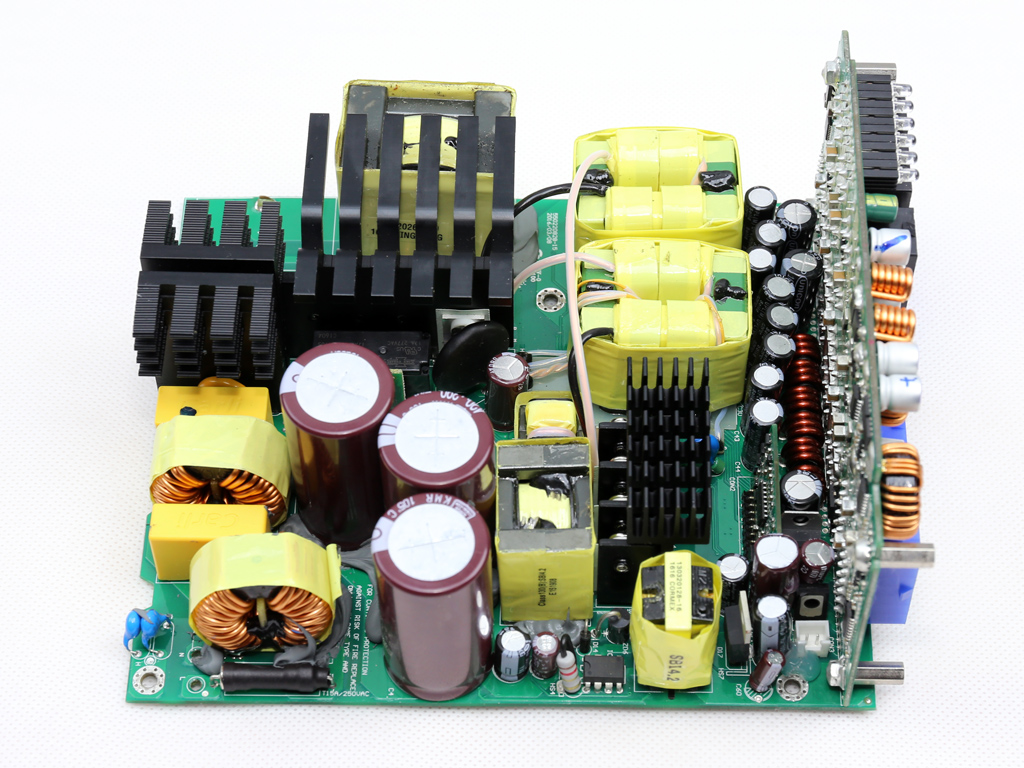

The Tokamak 1500 uses a sophisticated platform made by Enhance Electronics. Besides the typical analog controllers, we also find a micro-controller (MCU) that's probably used to provide amperage information to the circuit controlling the LED indicators, located on the PSU's rear side. The PCB uses large heat sinks, which is weird for an efficient PSU that doesn't dissipate much waste heat. Then again, given a 1500W ceiling, even small energy losses can create a significant thermal load. Plus the PCB is loaded with components, so it looks like Enhance simply chose to be safe.
The primary side's APFC converter uses two chokes, which would normally indicate an interleaved PFC where two converters work in parallel with a phase difference between them. This isn't the case though, since the PFC controller is a Champion CM6502S, which doesn't support interleaved PFC operation. The primary switching FETs are arranged into a full bridge topology and an LLC resonant converter is used to boost efficiency. On the secondary side, the FETs that regulate the +12V rail are installed on the PCB's solder side, so they're mainly cooled by the unit's chassis through a thermal pad. Two DC-DC converters are installed on the modular PCB, a method popularized by Seasonic. By putting them on the modular board, energy losses are limited since power takes a shorter route with less resistance.
A majority of the electrolytic caps aren't provided by a Japanese manufacturer, which we prefer to see in this prestige category.







The first part of the EMI filter starts at the AC receptacle with lots of parts, including three X and two Y caps. It is very rare to see so many X caps installed in this stage. As usual, the same filter continues on the main PCB with two more Y caps, another two X ones, two CM chokes, an MOV, and a CM02X installed on the solder side of the PCB, blocking current through an X cap's discharge (bleeding) resistor once AC is connected.



The bridge rectifiers cannot be identified without battling the primary heat sink.
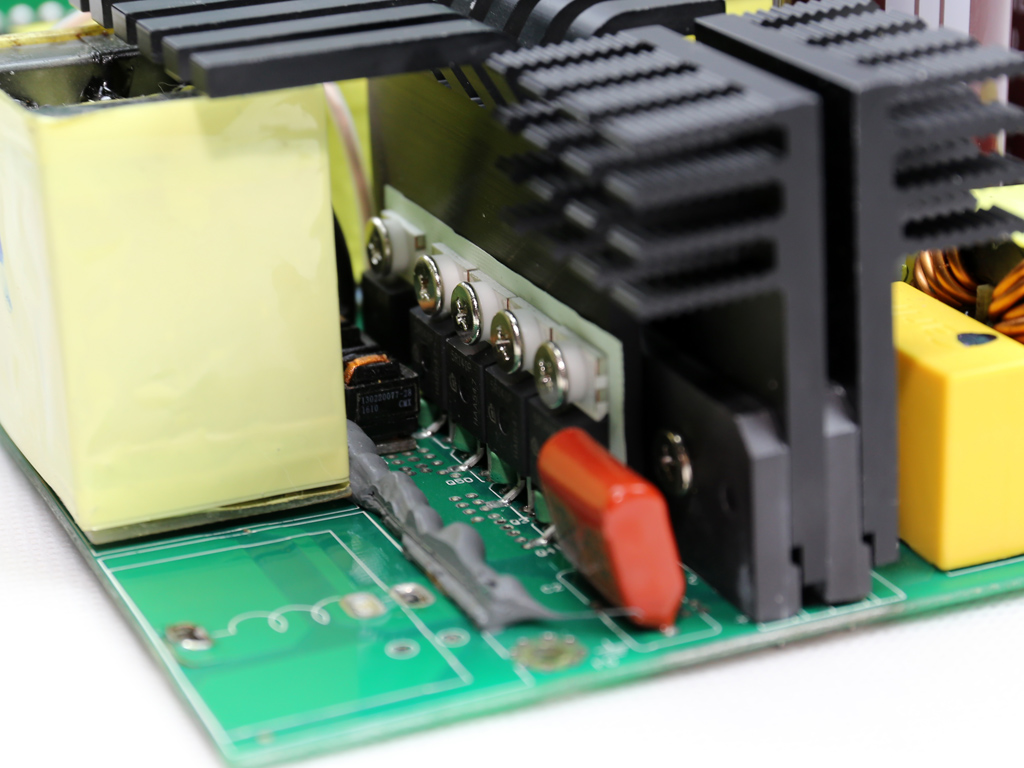



The APFC converter uses four Infineon IPP50R140CP FETs and a couple of CREE C3D10060A boost diodes. Obviously, Enhance used a large number of parts to facilitate increased amperage and minimize losses, since each FET handles less current this way. Two parallel chokes are used in this converter, and we had to remove one of them to clear line of sight to the components mentioned above. The bulk caps are four Chemi-Cons with a combined capacity of 1560uF. Although that's a lot, it's not enough for this unit; we measured a <17ms hold-up time.
Get Tom's Hardware's best news and in-depth reviews, straight to your inbox.
The PFC controller, a Champion CM6502S, along with a CM03X Green PFC controller, are installed on a small vertical daughterboard. This is a familiar combination in high-efficiency PSUs.
A large NTC thermistor handles inrush current suppression and a bypass relay supports it.
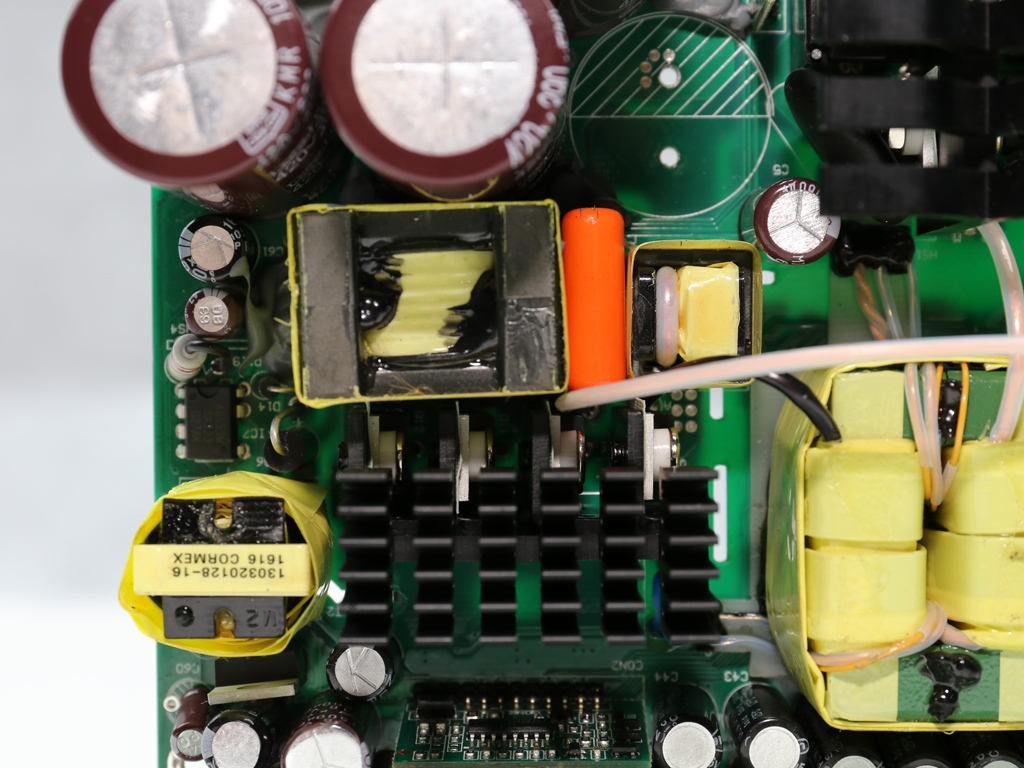





Four Infineon IPP50R140CP FETs arranged into a full-bridge topology are the main switchers. Their drivers are a couple of Silicon Labs Si8230BD ICs. A Champion CM6901 is the LLC resonant controller; this part is becoming more popular as PSUs get more efficient.
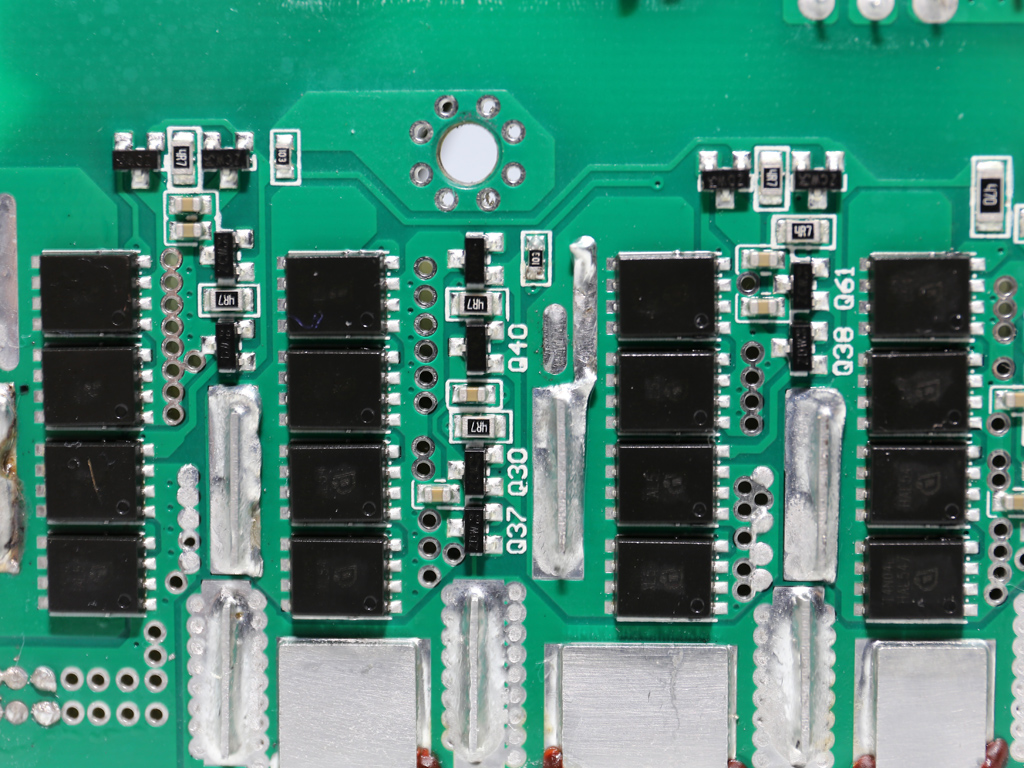

On the secondary side, the +12V FETs are installed on the PCB's solder side. In total, 16 Infineon BSC014N04LS are utilized for this purpose. As in the APFC converter, a lot of FETs are used to minimize power losses under high loads. Those FETs are mostly cooled by the PSU's chassis.




A large number of Unicon caps filter the +12V rail, and they're all rated for 105°C. Unicon is a Japanese company with pretty good products which are made though in either Taiwanese or Chinese factories. However in a $360 PSU we'd rather see high quality Japan-made caps. We also find several KY Chemi-Cons, along with few Rubycon caps, all with the same 105°C rating.
The supervisor IC is a SITI PS223, which supports OTP out of the box.



The couple of DC-DC converters use four Infineon BSC018NE2LS FETs and two ANPEC APW7073 PWM controllers.
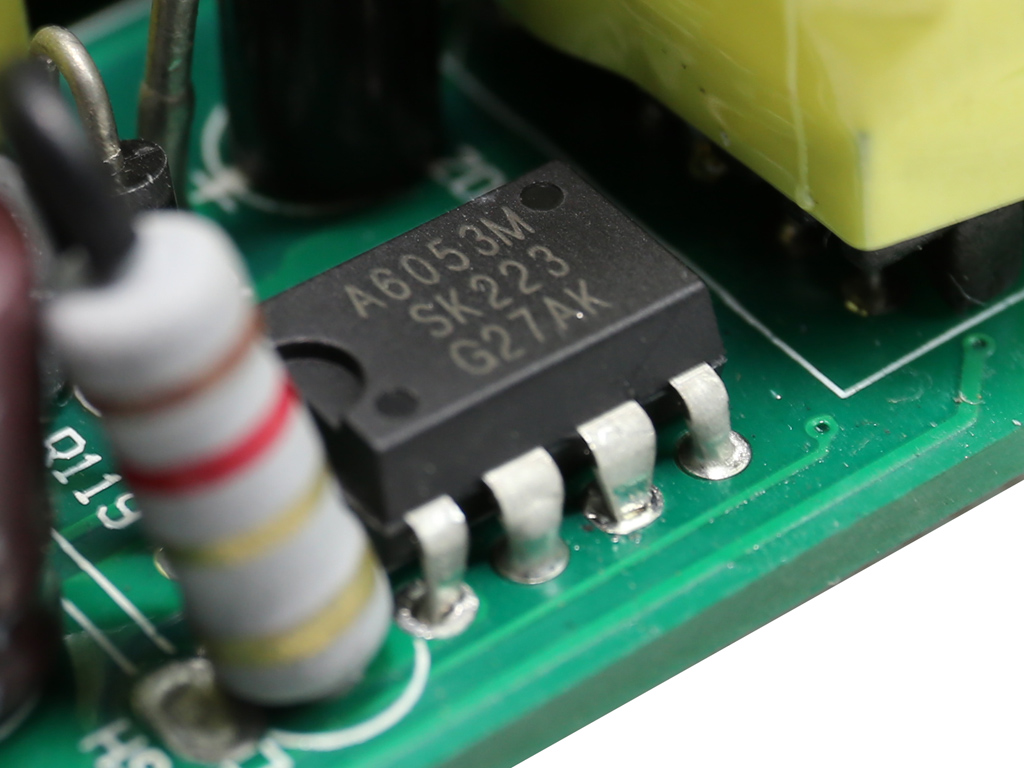
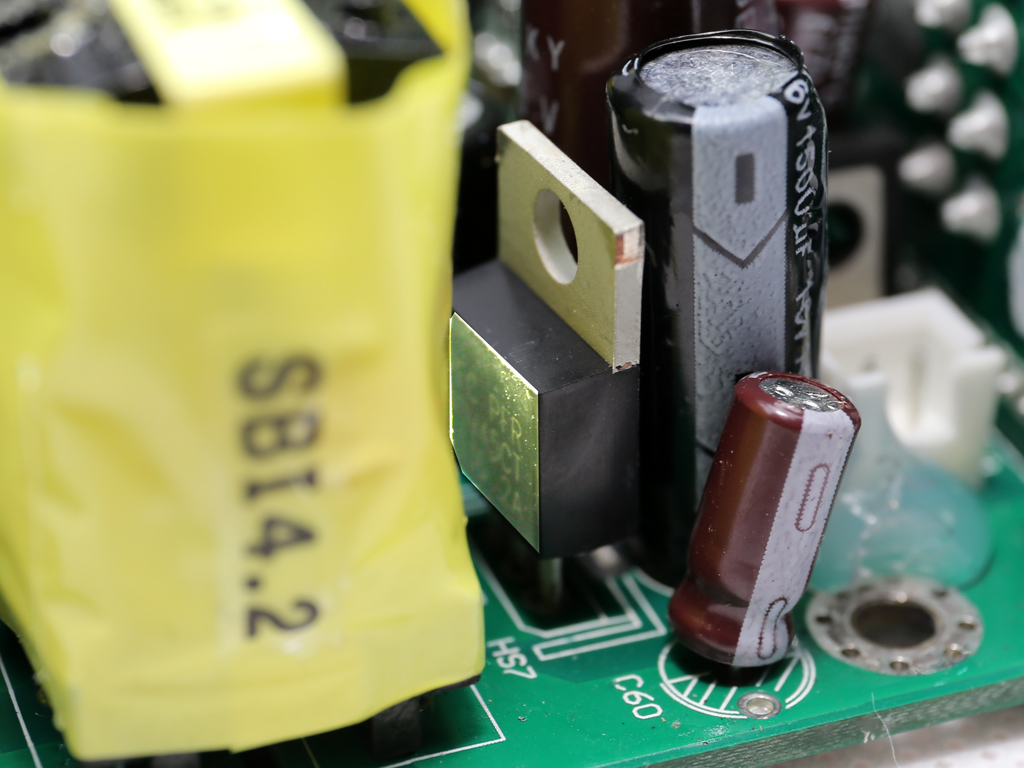
The standby PWM controller is a Sanken STR-A6053M, while the rectifier that handles the 5VSB rail is a PFR10V45CT SBR.
The -12V rail is generated with the help of a STMicroelectronics L7912CV regulator.


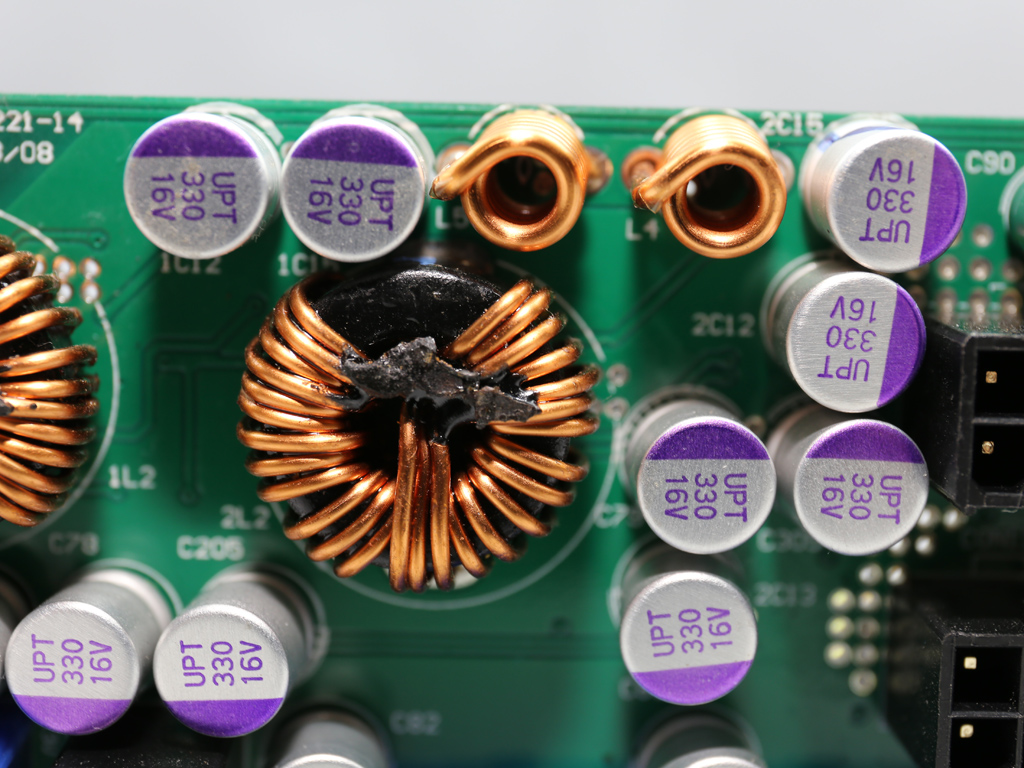





A large number of Unicon polymer caps are found on the modular board's front side, providing additional ripple filtering on all rails. This isn't enough, though; at least on the +12V rail, ripple is much higher than we'd expect.
On the back of the modular board, we also find a STMicroelectronics STM32F030F4P6 responsible for sending data to the LED indicators' control circuit.

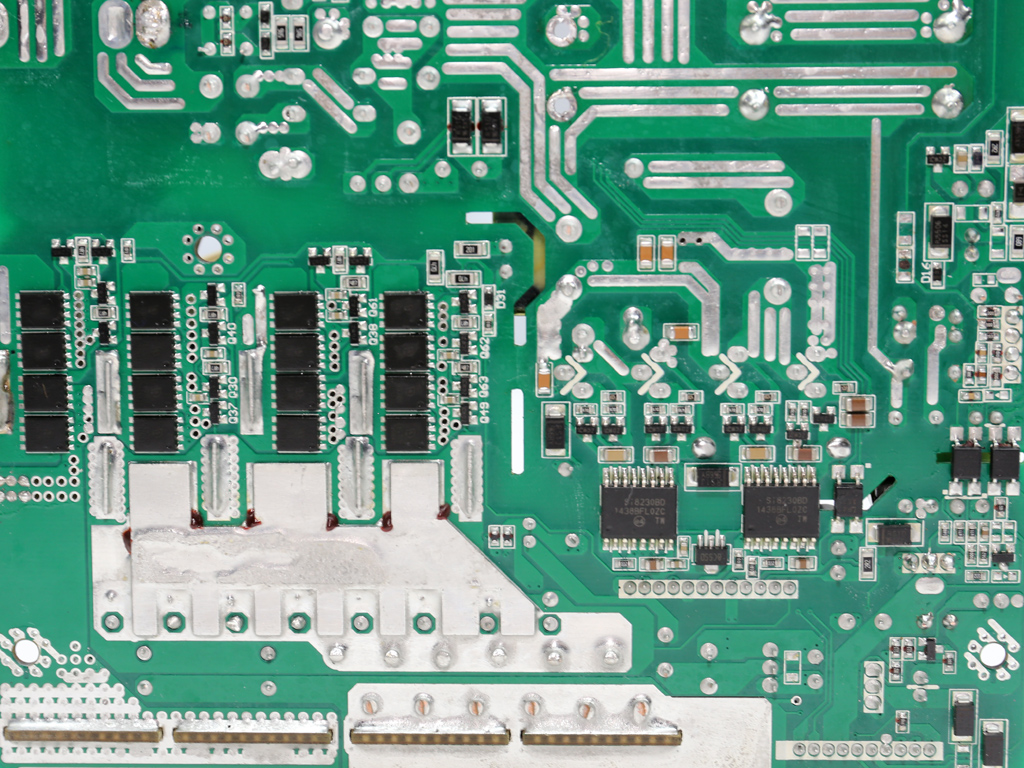


Enhance's implementations usually feature good soldering quality. The Tokamak 1500 is no exception.



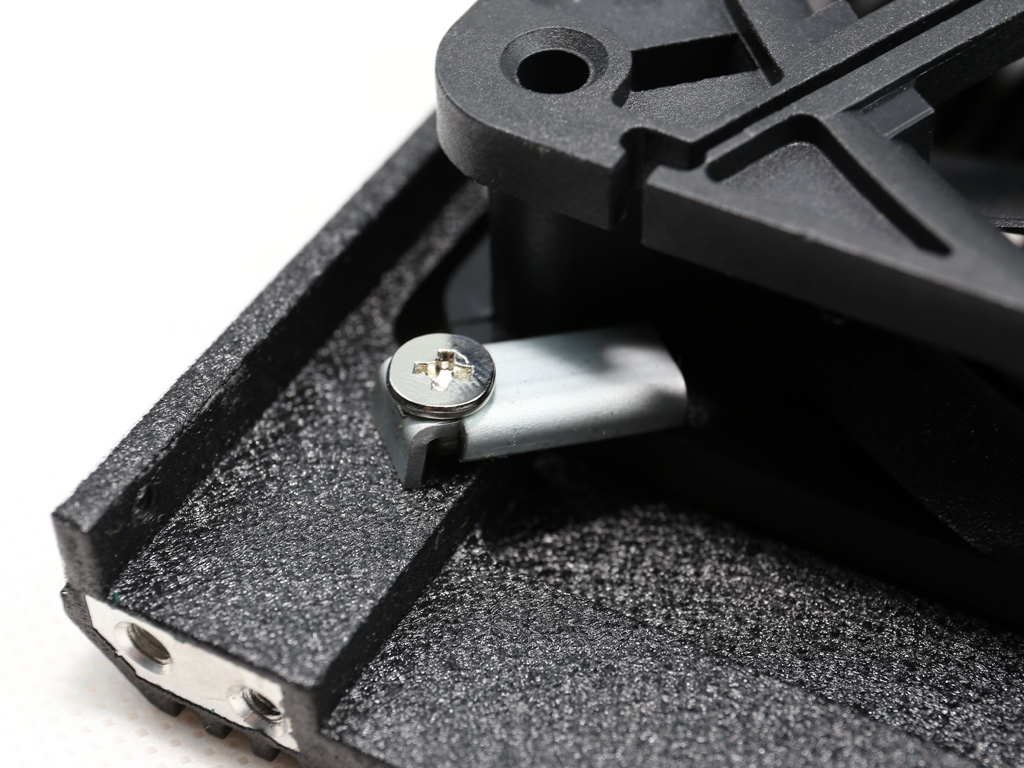
The unit's top cover is made of aluminum and, according to Rosewill, it improves cooling efficiency. We think the fan grille should be less restrictive to allow better airflow, which would definitely lower temperatures inside the Tokamak. The cooling fan (Young Lin Tech DFB132512H) is powerful; at 100% duty cycle, it makes a lot of noise. Moreover, its minimum speed is pretty high, so don't expect silence under light loads. A semi-passive mode would have come in handy.
Current page: A Look Inside And Component Analysis
Prev Page Packaging, Contents, Exterior, And Cabling Next Page Load Regulation, Hold-Up Time, And Inrush Current
Aris Mpitziopoulos is a contributing editor at Tom's Hardware, covering PSUs.
-
Onus With GPU-based mining days long gone, I don't ever see myself in the market for a beast like this; but no power switch? That's...bizarre.Reply -
Brian_R170 I keep reading that muti-GPU systems are on the decline, so what's continuing to drive development of PSUs with >1KW output?Reply -
kittle Reply
Im curious too -- i can only speculate the marketing folks are still pushing the "bigger number == better" mantra18972155 said:I keep reading that muti-GPU systems are on the decline, so what's continuing to drive development of PSUs with >1KW output? -
JohnnyLucky There are still some hardcore enthusiasts and a few who want bragging rights. I couldn't help but notice quite a few cons.Reply -
captaincharisma there is always someone out there whether they are an enthusiast or a first time system builder that will blindly buy this because after all "bigger is better" lolReply -
turkey3_scratch Rosewill always goes with a very simple exterior. I like it. This is also a very unique name. I'm sick of boring PSU names. Tomakamek. Sounds like some sort of ancient island, I like it.Reply -
SkyBill40 The reactor of the same name was the first thing that came to mind upon seeing it and even before it was mentioned in the write up. An interesting choice, no doubt. Given the output, I guess it's somewhat fitting.Reply -
daglesj Must admit rarely use the power switch at the back. Quicker to know that a pulled power lead means 'off'...completely. No great loss.Reply -
lunyone So ready for this to be in a m-ITX build! Lol! Too bad it isn't modular! <sarcasm over>Reply




